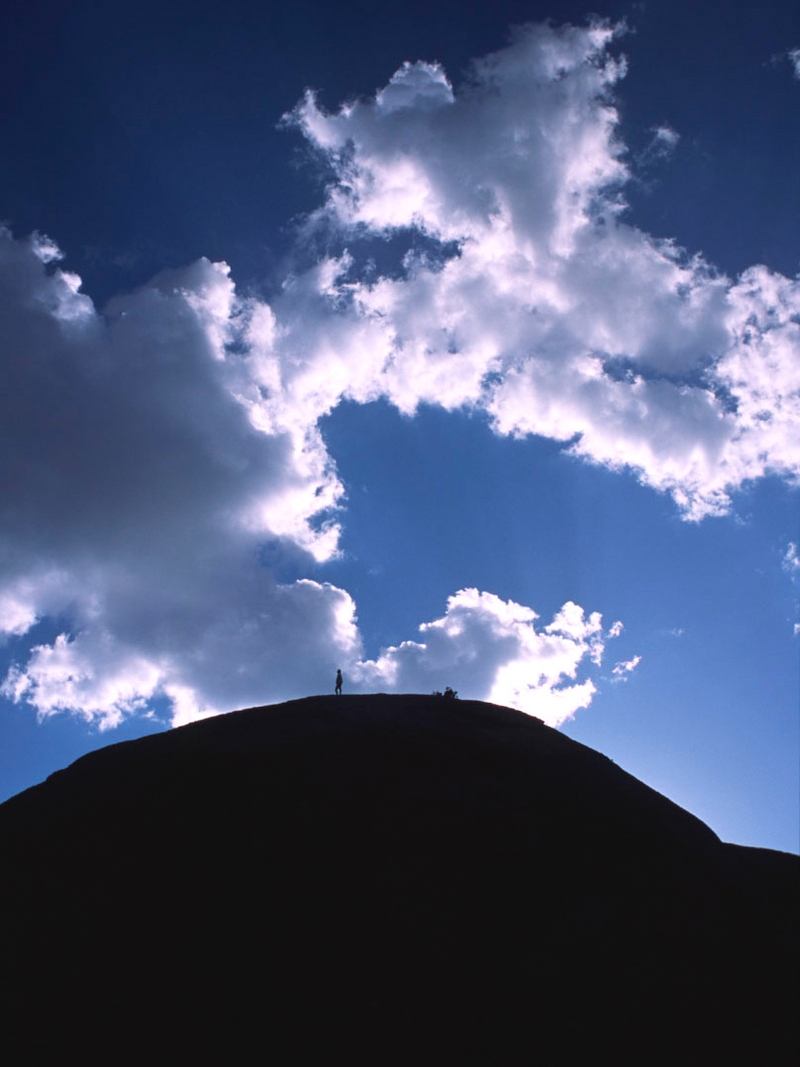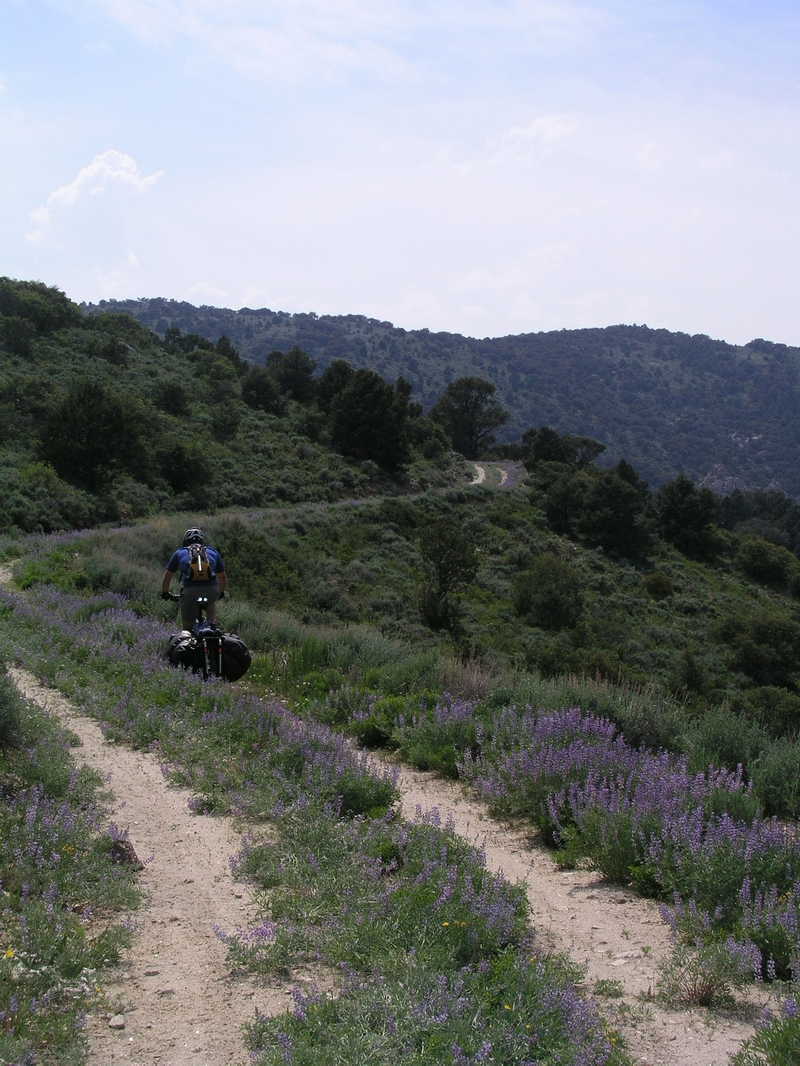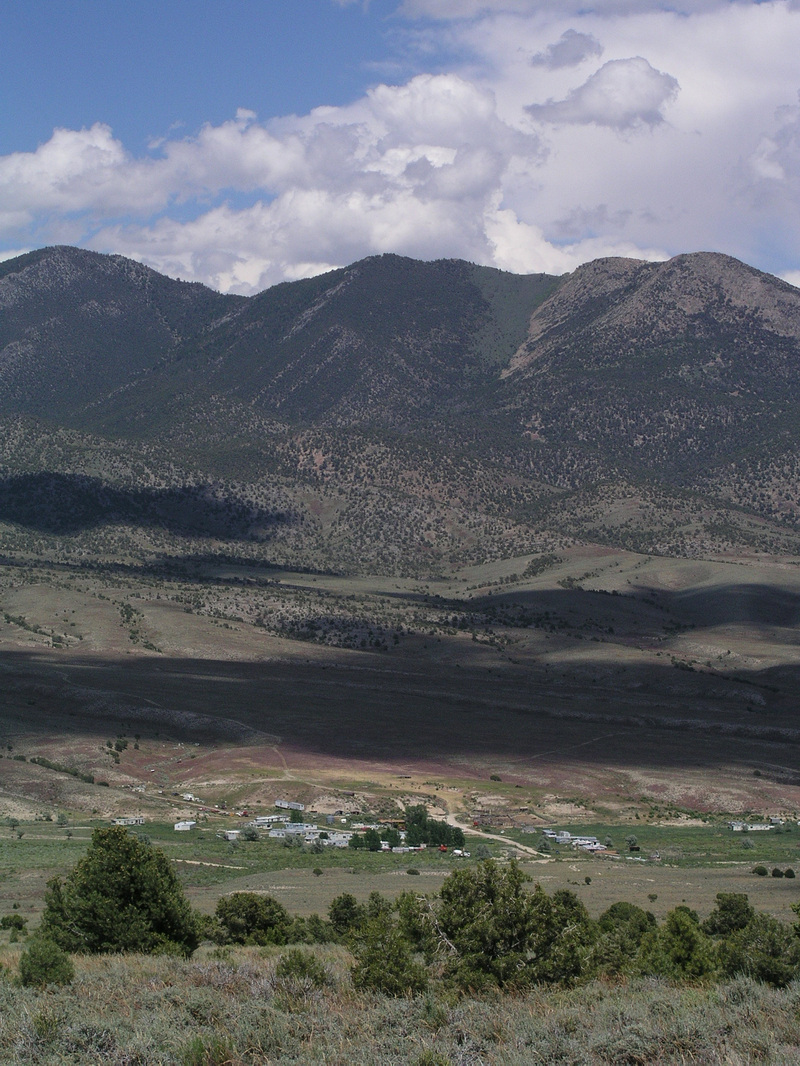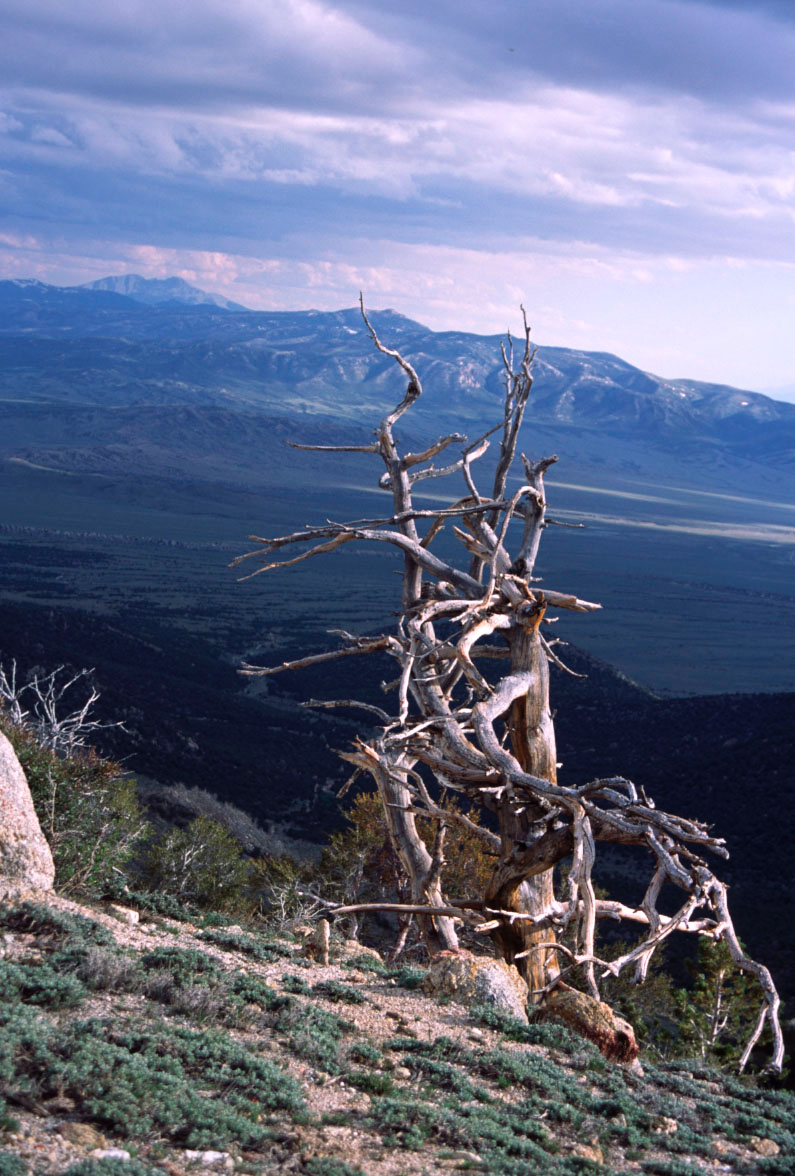Biking the Kern Mountains in Service of Wilderness: Part 4
 Navigation of the washout is far from easy, the only reasonablechoice is to completely unload the bike and ferry it and my gear downthe embankment, across the stream, and up the steep and sandy oppositebank. The entire process takes 40 minutes. I cover 30 yards. Theroad on the far side of the creek steepens sharply on the other side,and I can’t get started on the bike. Head down, straining, I dig inand push upward. Careful attention goes to each and every step, makingsure the steepness of the grades doesn’t send the bike reeling back totopple me. After a deep grind up to more level terrain, I get back onthe bike and start pedaling.
Navigation of the washout is far from easy, the only reasonablechoice is to completely unload the bike and ferry it and my gear downthe embankment, across the stream, and up the steep and sandy oppositebank. The entire process takes 40 minutes. I cover 30 yards. Theroad on the far side of the creek steepens sharply on the other side,and I can’t get started on the bike. Head down, straining, I dig inand push upward. Careful attention goes to each and every step, makingsure the steepness of the grades doesn’t send the bike reeling back totopple me. After a deep grind up to more level terrain, I get back onthe bike and start pedaling.
Again, I find momentum just as I reach another creek crossing—andanother complete washout of the road . . .
[Photo: localcrew]
 The maps do not say anythingabout washouts. This is why I’m here, to find things like this anddocument them. So despite the most immediate need to get up and overthe pass before dark, this is where I’ve got to stop, take stock, andproperly document the facts of this place. My argument, when I return with completed maps and photos will be something like this: Isit really worth the time, expense, and trouble to maintain roadways ina place where nature asserts itself so aggressively? Does this roadserve a greater good that justifies its existence, or are we better offleaving this landscape to its own devices?
The maps do not say anythingabout washouts. This is why I’m here, to find things like this anddocument them. So despite the most immediate need to get up and overthe pass before dark, this is where I’ve got to stop, take stock, andproperly document the facts of this place. My argument, when I return with completed maps and photos will be something like this: Isit really worth the time, expense, and trouble to maintain roadways ina place where nature asserts itself so aggressively? Does this roadserve a greater good that justifies its existence, or are we better offleaving this landscape to its own devices?
Pictures taken and coordinates plotted, I’ve got to get down to theimmediate business of crossing another ravaged drainage. Steep embankments and deepsand be damned, the last thing I want to do is spend the next hour covering a measly 20 – 30 yards. Against better judgment, Ipoint the bike over the edge and let gravity do its work.
It’s not that bad, really. Once set in motion, 400 lbs tends tohold a line. But I don’t make it far up the other side before I’mreminded that 400 lbs on two wheels does not float over sand. I manageto stop and hold the bike in place before I lose any ground, but ittakes everything I have to keep it there. Off the bike, legs buried inthe sand, I bear down and hold my position with all the resolve I canmuster. With a mighty shove, I bear into the bike and gain a preciouscouple of inches, clamp down on the front brake, and pause. Breathheaving, I remind myself how much I do not wish to be belly-up underwater with this thing on top of me.
And so it goes—push, brake, rest-push, brake, rest—ratcheting up thebank inch by difficult inch, until somehow, miraculously, the fronttire finds its way up and—yes!—over the lip of the embankment on thefar side. A couple more deep digs and the rest of the bike follows.I slump down next to it, wasted, and take a break. According to the map,I’ve gone less than 1/2 mile. I finish 70-mileMTB rides back home with more energy than this. It’s a decidedly inconvenient and uncomfortable time to rememberthat I chose to be here, and I chose to do things this way.
So I make a new choice: try not to think about the 200+ miles of this that lie ahead.
As night creeps down upon the range, I’m nearing the top of the passand settling into something like a rhythm. Rhythm invites thought, and I’m thinking about the time ahead. Before this trip is over I’ll havecrossed many more passes and survived just as many barreling freight-traindescents. I’ll scare the living bejesus out of scores of elk, abobcat, a mountain lion, and the ever-present coyotes, and I’ll witnessa hawk and eagle pitted in a mid-air duel. I’ll become hopelessly lostand then found again, cover hundreds of miles of utterly remoteand often unmapped roads, and stumble across a thriving polygamistcolony.I will unknowingly evade a three-day sheriff’s manhunt (ofwhich I’m the quarry) and eventually return to find my car broken intoand the 12-pack of beer I left behind, untouched and ice-cold in the nearbycreek.
mid-air duel. I’ll become hopelessly lostand then found again, cover hundreds of miles of utterly remoteand often unmapped roads, and stumble across a thriving polygamistcolony.I will unknowingly evade a three-day sheriff’s manhunt (ofwhich I’m the quarry) and eventually return to find my car broken intoand the 12-pack of beer I left behind, untouched and ice-cold in the nearbycreek.
For now, head down, I keep pedaling upward and thinking about whyI’m here. Is it just to be alone? To prove a point? To find sometrace of freedom and adventure? To find which side I’m on– bikes, orwilderness?
I love riding my bike, but I need to know that wild places exist.Freedom still comes easy on a bike. But in these days when outdoorlifestyles have become more image than everyday reality, we livefar-removed from the land that still sustains us. And preciselybecause we’re so suburbanly sprawled, genuine adventure is becoming asendangered as the creatures who call our dwindling wilderness theirhome.
The heave of my breath and the creak and strain of the bike startlea pair of golden eagles resting in tall meadow grass near the top ofthe pass. They lift from the grass and swoop toward me, dwarfing me inthe sunset shadows of their enormous wings. They’re near enough totouch. Remembering an old Zen proverb, my desire for the relentlessclimb to end evaporates in their presence:
Before enlightenment, chopwood and carry water. After enlightenment, chop wood and carrywater.
We must do what sustains us. But what to do if there is nowood to chop, nor no drop of water left to carry?
 The eagles slowly rise, becoming black stars above the ridgeline,and I return to my work. I’ll keep biking this mountain, hoping thatin its own small way my choice, my action, will make wilderness.
The eagles slowly rise, becoming black stars above the ridgeline,and I return to my work. I’ll keep biking this mountain, hoping thatin its own small way my choice, my action, will make wilderness.
[Top – Grinding toward the final pass of the tour, Tungstonia Summit. This summit divides the hot and dry southeastern portion of the range from the wetter, rockier northwestern quarter. Photo: David Smoyer.
Top right – Surprise neighbors. Photo: localcrew
Above right – Columbine. Photo: Davide Smoyer.
Bottom left – One of only a few bristlecones holding fast to the highest ridgeline of the Kern Mountains. Photo: localcrew.]
